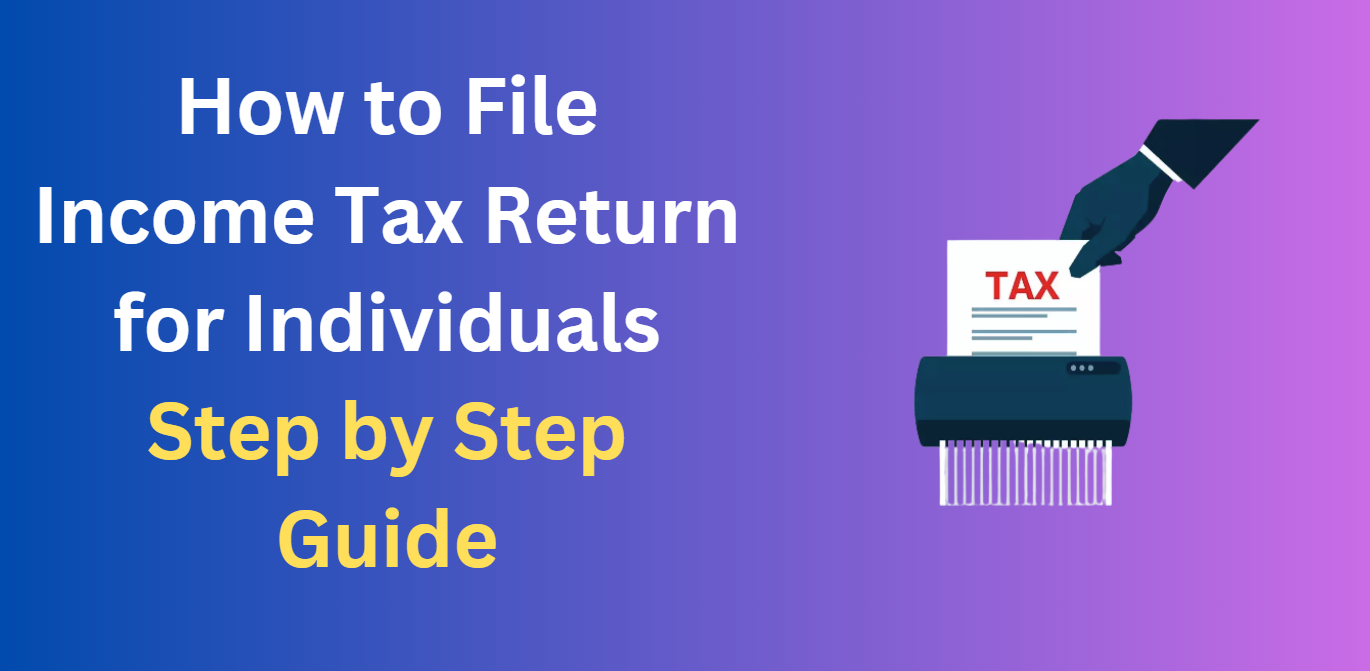Filing income tax returns can be a daunting task for many individuals. There are various forms to fill out, supporting documents to gather, and guidelines to follow. However, understanding the process and being prepared can make the experience a lot less overwhelming. In this article, we will provide a step-by-step guide on how to file
Income Tax Return for Individuals, ensuring a smooth and hassle-free process.
Understanding the Importance of Filing Income Tax Returns
Filing income tax returns is not only a legal requirement but also offers several benefits. It helps in establishing your financial credibility, especially when applying for loans or visas. Additionally, filing income tax returns allows you to claim various deductions and exemptions, reducing your overall tax liability. By filing your income tax return on time, you avoid penalties and interest charges imposed by the tax authorities. It is a responsible civic duty that contributes to the country's economic development.
Step-by-Step Guide to Filing Income Tax Returns
1. Gathering the Necessary Documents and Information
Before you begin filling out your income tax return form, it is essential to gather all the relevant documents and information. This includes your PAN card, Aadhaar card, bank statements, Form 16 or salary certificates, investment proofs, and any other supporting documents related to your income and expenses. Having these documents ready beforehand will save you time and prevent any last-minute hassles.
2. Choosing the Correct ITR Form for Individuals
The next step is to determine the appropriate Income Tax Return (ITR) form applicable to you. The ITR forms vary based on the source of income, residential status, and other factors. The most common forms for individual taxpayers are ITR-1 (SAHAJ), ITR-2, and ITR-3. Understanding the eligibility criteria and selecting the right form is crucial to ensure accurate filing.
3. Filling Out the ITR Form Accurately
Once you have identified the correct ITR form, it's time to fill it out accurately. Provide all the required personal details, including your name, address, PAN, and Aadhaar number. Carefully report your income from various sources, such as salary, business, capital gains, and other investments. Ensure that you accurately calculate your taxable income and claim eligible deductions and exemptions, such as those related to home loans, medical expenses, and investments. Double-check all the entered information to avoid any errors or discrepancies.
4. Reporting Income from Various Sources
While filling out the ITR form, it is essential to report your income from all sources, including salary, interest, dividends, rental income, and any other earnings. Failure to disclose any income can result in penalties and legal consequences. Ensure that you accurately report all your income, even if it falls below the taxable threshold.
5. Claiming Deductions and Exemptions
One of the significant advantages of filing income tax returns is the opportunity to claim deductions and exemptions. Deductions such as those for investments in Provident Fund, National Pension Scheme, Life Insurance Premiums, and Mediclaim policies can significantly reduce your taxable income. Additionally, exemptions for House Rent Allowance (HRA), Leave Travel Allowance (LTA), and other allowances can further reduce your tax liability. Make sure to understand the applicable deductions and exemptions and claim them correctly in your income tax return.
6. Calculating and Paying Taxes Owed
After accurately reporting your income and claiming deductions, it's time to calculate the taxes owed. Use the applicable tax slabs and rates to determine your tax liability. If you have already paid taxes through TDS (Tax Deducted at Source) or advance tax, ensure that you correctly include these details in your income tax return. If there is any additional tax payable, make the necessary payment before filing your return to avoid penalties.
7. Filing the Income Tax Return Online
The preferred method of filing income tax returns for individuals is through the online mode. Register on the official Income Tax Department website and create your account. Select the relevant ITR form and fill it out online. Attach the necessary documents and verify the details before submitting the return. Upon successful submission, you will receive an acknowledgment receipt (ITR-V). Make sure to download and preserve this document for future reference.
8. Common Mistakes to Avoid When Filing Income Tax Returns
Lastly, it is crucial to be aware of common mistakes that individuals often make when filing their income tax returns. Some common errors include incorrect reporting of income, incorrect claim of deductions, mismatch of information in Form 26AS and Form 16, and failure to verify the return after filing. To avoid these mistakes, review your income tax return thoroughly before submission and consult with a tax professional if needed.
In conclusion, filing income tax returns as an individual may seem overwhelming at first, but with proper preparation and understanding of the process, it can be a smooth and hassle-free experience. By following the step-by-step guide outlined in this article, you can ensure compliance with tax laws, maximize your tax benefits, and contribute to the nation's progress. So get started on filing your income tax return today and take control of your financial future.
Other Link
Top Income Tax Consultants
Private Limited Company Registration
One Person Company Registration Service
Public Limited Company Registration Service
GST Return Filing Services
Trademark Registration service

